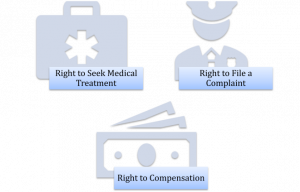Dowry is anything which has value (such as cash and property) which is given by the bride’s family to the groom’s family as a condition of marriage.(( Section 2, Dowry Prohibition Act, 1961.))
The law does not stop the exchange of gifts with the fiance’s family during the wedding. The purpose of this law is to prohibit coercion during the gift exchange.
Gifts from the bride’s side should be according to custom and as per financial capacity of her family. For example, in marriages in certain societies, sarees and jewellery are given to women relatives of both the bride and groom, by the other side. This is done as per custom and therefore would not be considered as dowry. There may be other customs of giving certain gifts.
However, it is important to note that the groom’s family cannot force a bride to give the gifts per the custom as this would be demanding dowry. Generally, gifts given should be of a value which do not create an extraordinary financial burden to the person giving them.(( Provision to Section 3, Dowry Prohibition Act, 1961)) For example, if the bride’s father has to take a loan of a significant amount to buy gifts for the groom’s side, then it cannot be said that the gift has been given as per financial capacity of the person. This could be a case of an excessive financial burden on him and could be seen as a case of dowry.
